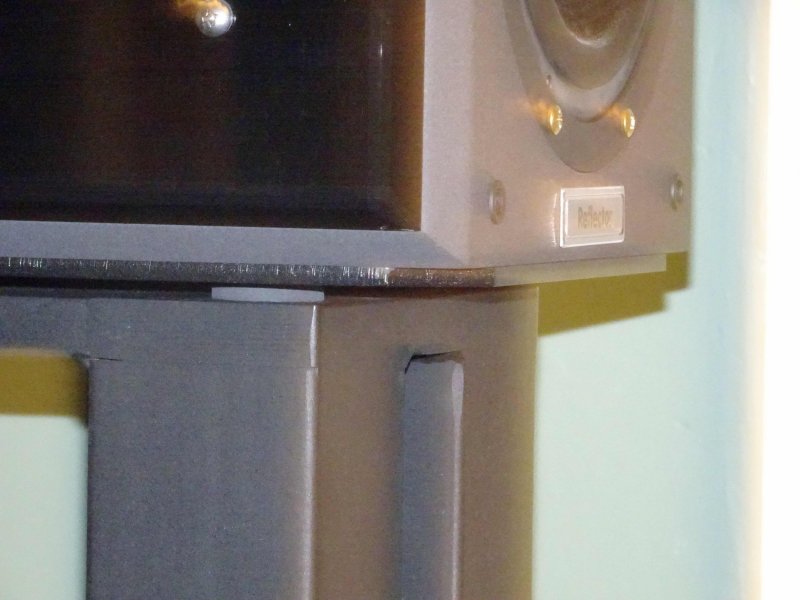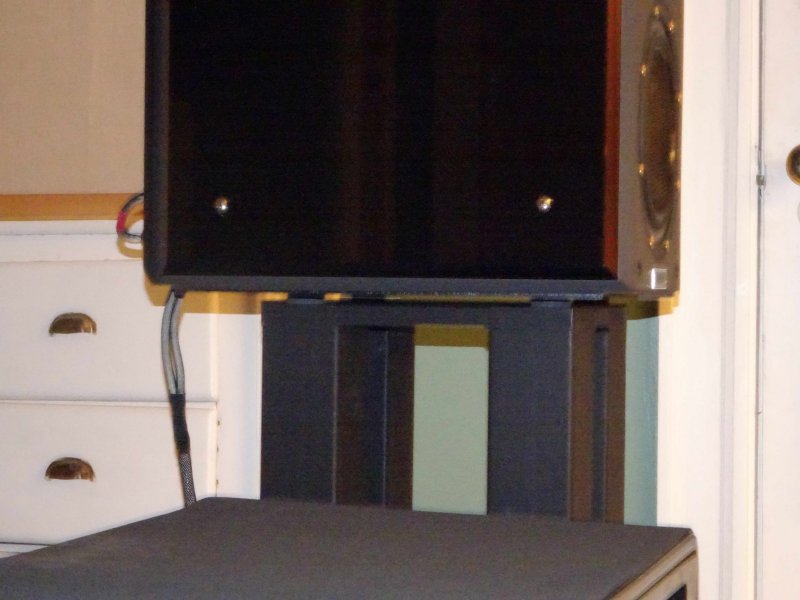The transformation of sound just amazed me, this was not what I had expected. Distortion was yet again way down. There was yet cleaner sound from the violins in the problematic recording of the Haydn string quartet op 20/II on period instruments, and with it I noticed a more perfect integration of the highs -- you do not know what is missing until you hear the improvement.
Sorting through some problematic loud passages in my favorite set of Haydn's complete 104 symphonies (Dennis Russell Davies cond. Stuttgart Chamber Orchestra), I discovered that these unexpectedly also sounded much better. Peaks were not just cleaner sounding, but also featured more resolution. In a dense passage of the first movement of Symphony 43 I could, for the first time, easily distinguish the figures that the strings were playing.
Even Black Sabbath's War Pigs sounded better. While there were still very distorted and aggressive guitars as there
should be, they also sounded cleaner (as did Ozzy's voice). In a sense there was a cleaner dirtiness

. I also could play the recording yet louder without any strain; I went to a volume level with peaks of 94 dBa, close to 100 dB (I did not try even louder, I don't want to fry my ears and try to adhere to
NIOSH recommendations).
Overall, while a few distortions still remained, I could listen to all of the six Haydn string quartets op. 20 on period instruments with pleasure. Now the recording had gone from listenable to really enjoyable, and delving into the music I discovered what a treasure it was. The other recording of Haydn string quartets on period instruments that I had mentioned a few days ago, the six quartets op. 33 with the Eybler Quartet, now sounded practically free of distortion (with just a handful of slightly problematic brief moments on the entire double CD remaining) -- again at volume peaks of up to 90 dBa (ca. 95 db) -- and with considerably greater purity and beauty of shading of tone than before all my recent changes.
After some time, I tried a fresh set of the Sound Anchors Blue Dots that I also had obtained ($ 1.35 each), and was surprised that they gave a very similar result to the Herbie's Big Fat Dots in terms of improvements of distortion and tonality (the slight speaker toe-in was kept the same between the footer changes by laser measurement). So maybe the deformation of the old dots had done more damage than I thought, or perhaps the great weight of the monitors had diminished their damping properties over time. In terms of handling I definitely prefer the much sturdier Herbie's Big Fat Dots over the soft and thin Blue Dots, and decided to stick with them.
The new isolation footers between speakers and stands also solved another issue. While there had been no hardness on the choral and solo vocals on the "Cantate Domine" recording (Propius), on his last visit Peter A. rightfully complained about some hardness of vocals on Holst's Six Choruses for male vocals (Argo/Decca), a recording that I had first heard in his system and then bought on CD (Holst's vocal music in general is really beautiful and amazing!). Now the excessive hardness was gone. While my memory is not good enough to know if the presentation is as buttery as on vinyl, I just cannot detect any level of hardness anymore that would obviously be counter to a natural and believable presentation. While the presentation has certainly smoothed out in that manner, its great vividness is preserved.
The monitors have no crossover, with direct coupling of the mid-woofer to the amplifier, which favors dynamic liveliness and immediacy of sound (the tweeter is kept from frying by a capacitor). A theoretical drawback is high-frequency break-up of the mid-woofer, but it amazes me how loud the monitors can now play without any problems. The last several days I spun a few times the fourth, wild movement of the orchestral work Scheherazade (Reiner/CSO on XRCD), and was astounded at how effortless and without strain, and with hardly any distortion, the system presented this dynamic music at a volume with peak levels of 96 dBa (100 dB or above). Quite a difference after the last improvements to acoustics and resonance control. This morning I actually caught myself laughing upon experiencing the almost relaxed ease with which these 2-way monitors projected the outrageous sequences of dynamic explosions in the middle of the movement.
The great cabinet rigidity probably helps in suppressing breakup modes of the speaker cone to run out of control, and the mid-woofer itself is optimized. My previous Reference 3A monitors that had a less rigid cabinet, the MM DeCapo BE, did have some audible breakup modes, like on loud treble notes from piano (these are clean on the current monitors). They also had a less optimized mid-woofer. The Reference 3A MM DeCapo BE monitor seems a nice engineering feat for the price, the Reference 3A Reflector monitor seems a great engineering accomplishment, period.



